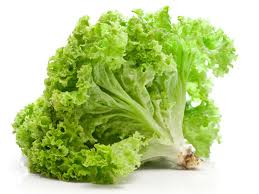Lettuce

Lettuce (Lactuca sativa) is a vegetable plant commonly grown in temperate and tropical regions. The main use is as a salad
Lactuca sativa, the only domesticated type of Lactuca, is a native valley of the eastern Mediterranean. Proof of painting at ancient Egyptian cemeteries shows that the lettuce that did not form the "head" has been planted since 4500 BC. Initially, this plant may be used as a medicine, and for edible oils. Some local races of lettuce, known to be used for the seeds. Wild lettuce types often have spiny leaves and stems, do not form head and leaves taste bitter, and contain a lot of sap.
The breeding of this plant may be emphasized to obtain a plant that is not spiny, slowly flowering, large seed and not spread, not gummy, and not bitter. Other aspects include fewer wild buds, wide and large leaves, and head shape. The head-shaped lettuce is a cultivated plant somewhat more now, firstly named as "cabbage lettuce" in 1543.
After the initial development of the rosette, the later leaves begin to grow overlapping, and eventually trap the newly formed leaves. The continued development of trapped leaves increases the density of the head; the head is usually shaped almost round. The head can become very hard, and with the bigger, the head can break. The leaves are too ripe to taste bitter. The inner leaves are folded tight into rough (rugose), brittle and crunchy. The outer leaves are usually dark green, increasingly into the younger colors. When harvested, the plants in the field typically weigh between 700 and 1000 g. Greenhouse lettuce production is generally much smaller. Good shelf life and transport is an essential feature of crisp head salad
Lettuce has mineral content, including iodine, phosphorus, iron, copper, cobalt, zinc, calcium, manganese, and potassium, so lettuce has the best properties in maintaining body balance. The green outer skin is the best. Cooked slowly for 15 minutes is a cure for insomnia.